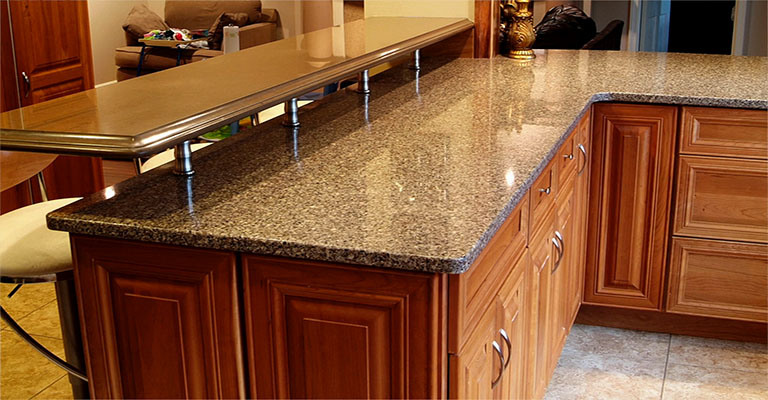Cinder Block Dimensions: A Guide for Construction Needs
Cinder blocks, also known as concrete masonry units (CMUs), are essential building materials used in construction worldwide. Their popularity stems from their durability, affordability, and versatility in various building projects. Understanding the dimensions of cinder blocks is crucial for architects, engineers, contractors, and DIY enthusiasts to ensure the structural integrity and aesthetic appeal of their projects.
Standard Cinder Block Dimensions
1. Full-Size Blocks
The most common cinder block size is the full-size block. Typically, a standard full-size cinder block measures 16 inches long, 8 inches high, and 8 inches deep. However, the actual dimensions can slightly vary depending on the manufacturer. These blocks are used for most construction projects due to their optimal balance between weight and stability.
2. Half-Size Blocks
Half-size cinder blocks are exactly half the size of full-size blocks. They measure 8 inches long, 8 inches high, and 8 inches deep. These blocks are often used for building corners or for projects where smaller blocks are more practical.
Specialized Cinder Block Dimensions
In addition to standard sizes, cinder blocks come in various specialized dimensions to meet specific construction needs.
1. Corner Blocks
Corner blocks have one end that is normally shaped, while the other end is designed to form a corner. Their dimensions vary but are typically based on the standard full-size block measurements.
2. Jumbo Blocks
Jumbo blocks are larger than standard blocks and are used in commercial construction for increased strength. They typically measure 18 inches long, 8 inches high, and 8 inches deep.
3. Partition Blocks
Partition blocks are used to create internal partitions in buildings. They are generally thinner, measuring 16 inches long, 8 inches high, and 4 inches deep.
Importance of Cinder Block Dimensions in Construction
The dimensions of cinder blocks play a vital role in the structural integrity of a building. It’s essential to consider the size and weight of the blocks to ensure they can support the required load. Additionally, the dimensions influence the amount of mortar or grout needed, affecting both the construction cost and time.
Factors Influencing the Choice of Cinder Block Dimensions
Several factors influence the choice of cinder block dimensions, including:
Type of Construction
Residential projects may use standard-size blocks, while commercial projects might require jumbo blocks for added strength.
Architectural Design
The design of the building can dictate the size of the blocks, especially for aesthetic purposes or unique architectural features.
Load-Bearing Requirements
Larger blocks might be necessary for structures that need to support more weight.
Regional Building Codes
Local building codes may specify certain dimensions to be used in construction projects.
Practical Tips for Selecting Cinder Blocks
When selecting cinder blocks for a project, consider these practical tips:
Assess the Project Needs
Understand the scope and requirements of your project. For residential projects, standard-size blocks are usually sufficient, while commercial projects might require larger, more robust blocks.
Check Local Building Codes
Always refer to local building codes and regulations to ensure compliance. These codes might dictate specific dimensions or types of cinder blocks for certain constructions.
Consider the Aesthetic Aspect
For projects where appearance is important, the size and texture of the cinder blocks can impact the overall look of the building. Choose sizes that align with the architectural design.
Calculate the Quantity Correctly
Based on the dimensions of the cinder blocks, calculate how many blocks you’ll need for your project. Accurate calculations help in budgeting and avoiding material shortages or excesses.
Maintenance and Durability
Cinder blocks are known for their durability, but understanding their maintenance needs is also essential:
Weather Resistance
Cinder blocks are generally weather-resistant, but in areas with extreme weather conditions, consider using blocks with higher density and durability.
Insulation Properties
Depending on their size and density, cinder blocks have varying insulation properties. Larger blocks may offer better insulation, which is crucial for energy efficiency in buildings.
Environmental Considerations
The environmental impact of using cinder blocks is an increasingly important consideration. Opt for cinder blocks made from sustainable materials or those that offer energy efficiency benefits. Additionally, consider the recyclability of the blocks at the end of their lifecycle.
Cost Considerations
One of the vital aspects of any construction project is budgeting. Here’s how cinder block dimensions impact the cost:
Size and Material Cost
Generally, larger blocks might be more expensive due to the increased material. However, they may reduce labor costs as fewer blocks cover more area.
Transportation and Handling
Larger blocks are heavier and might incur higher transportation and handling costs.
Waste Reduction
Choosing the right size of blocks can reduce waste and, consequently, the cost. Accurate planning and measurement are crucial in this regard.
Safety and Compliance
Safety is paramount in construction. Here’s how the dimensions of cinder blocks play a role:
Load-Bearing Capacity
Ensure the chosen block size can handle the structural load. This is crucial for the safety and longevity of the building.
Compliance with Safety Standards
Adhering to the dimensions recommended by safety standards minimizes the risk of structural failures.
Selecting the Right Cinder Block for Your Project
Choosing the right cinder block dimensions is not just about the size. Here’s what else to consider:
Strength Ratings
Cinder blocks come with different strength ratings. Choose one that suits the load requirements of your project.
Texture and Color
Depending on the visual outcome you desire, cinder blocks offer various textures and colors.
Architectural Requirements
For projects with unique architectural designs, the dimensions of the blocks might need to be adjusted accordingly.
Industry Standards and Best Practices
Adhering to industry standards and best practices ensures the longevity and safety of your construction. It includes:
Following Building Codes
Always ensure that the cinder blocks you choose comply with local and national building codes.
Quality Assurance
Opt for cinder blocks from reputable manufacturers who adhere to quality standards.
The Role of Cinder Blocks in Sustainable Construction
Cinder blocks play a significant role in sustainable construction practices:
Energy Efficiency
Their thermal mass helps regulate indoor temperatures, reducing energy consumption.
Longevity and Recyclability
The durability of cinder blocks means less need for replacement, and their recyclability contributes to sustainable construction practices.
Frequently Asked Questions (FAQs)
Addressing some common queries about cinder block dimensions:
Q: Can I customize cinder block sizes?
A: Custom sizes are available but could be more expensive and might require special orders from manufacturers.
Q: How does block size affect the insulation of a building?
A: Larger blocks often have better insulation properties due to more air entrapped, which can improve energy efficiency.
Q: Are there eco-friendly cinder block options?
A: Yes, some blocks are made from recycled materials, offering a more sustainable choice.
Conclusion
Understanding the nuances of cinder block dimensions is crucial whether you’re dealing with solid concrete blocks, hollow concrete blocks, or the standard concrete blocks. The choice between these types and a poured concrete wall can significantly impact the structural integrity and aesthetic appeal of your project. For instance, solid blocks are preferred for load-bearing walls, while hollow blocks are better suited for non-load-bearing partitions.
The National Concrete Masonry Association provides guidelines that are invaluable in determining the appropriate use of each type of concrete masonry unit. Whether you’re constructing cinder block walls, concrete walls, or even intricate structures like retaining walls and door and window openings, the right knowledge of these dimensions ensures a solid, durable, and efficient build. When it comes to constructing a cinder block wall, the significance of bond beams cannot be overstated. They provide additional structural support, especially in load-bearing walls and larger projects.
By understanding the various dimensions and types of concrete blocks – from solid concrete blocks to hollow ones – builders and DIY enthusiasts can make informed decisions, ensuring that their structures, be it a simple cinder block wall or more complex retaining walls, stand the test of time. The National Concrete Masonry Association emphasizes the importance of adhering to industry standards, particularly in the case of building material selection, to ensure safety and durability. Overall, the correct application of concrete masonry units, be it in cinder block walls or concrete walls, is pivotal in achieving the desired outcome in any construction project.






